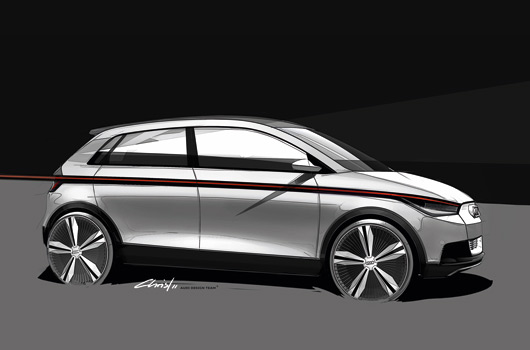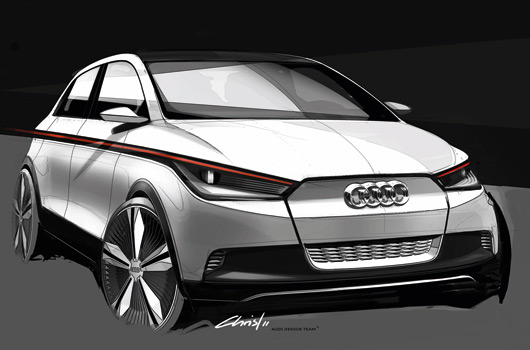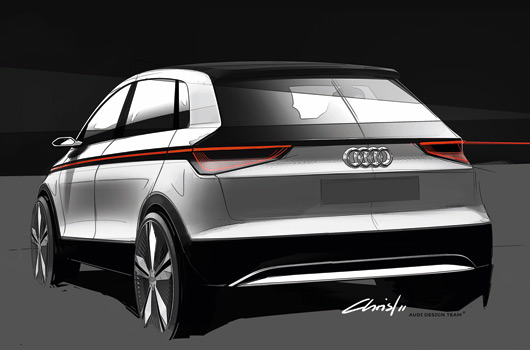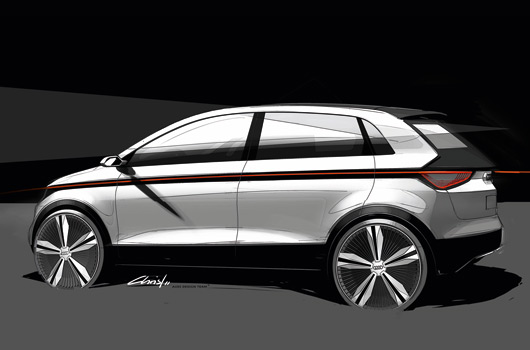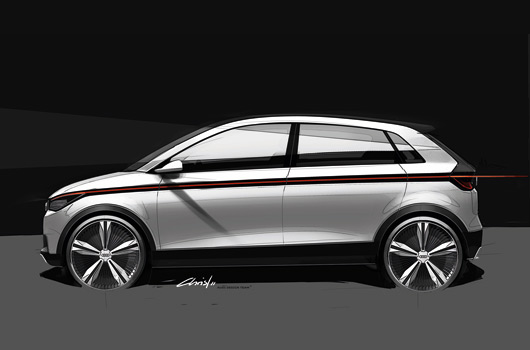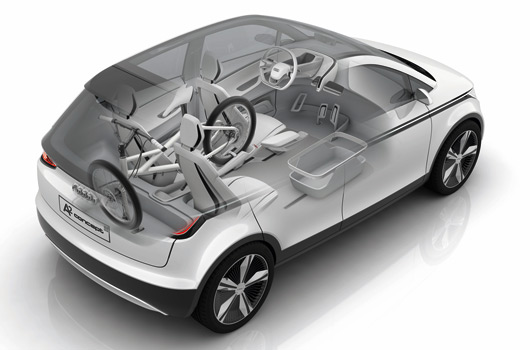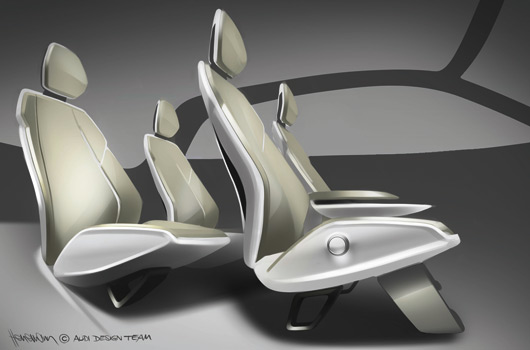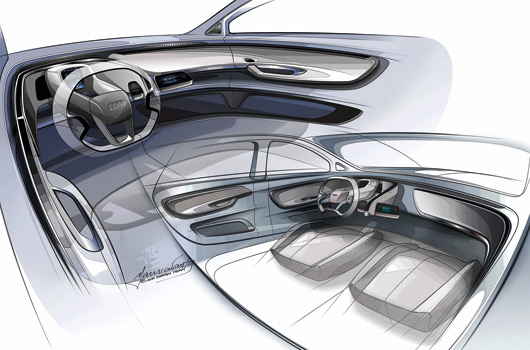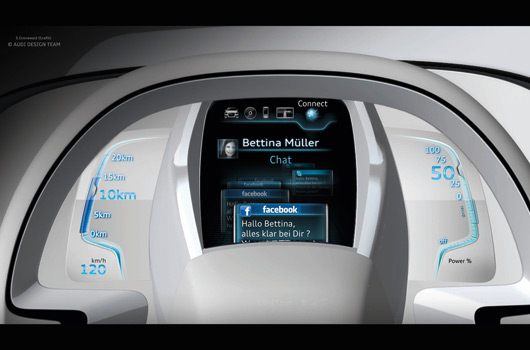You’re looking at concept drawings of the next Audi A2. The first-generation, launched at the turn of the century, struggled to find a niche and production ceased in 2005. Audi will be hoping this revitalised version will do much better.
Compared to the original A2 the styling now embraces a stronger resemblance to the broader Audi family. Indeed, we quite like the look of this new model.
Of course, we’ll be seeing more of the A2 concept at Frankfurt in a bit over a week’s time. The show special features an all-electric powertrain and four individual seats. Such a layout allows the A2 to use its compact dimensions—3.8m long, 1.69m wide and 1.49m high—to best effect through a number of seating and storage layouts.
We’ve not been given a lot of detail, apart from these sketches, although the ‘matrix beam’ LED headlamps do sound quite interesting. So too the rear foglight, which uses fog to help project a triangular warning.
Ingolstadt, 2011-09-02
The Audi A2 concept – premium-class space concept
- Plenty of room for four people within a length of just 3.80 meters
- Matrix beam, dynamic light and an innovative, bright interior design
- Powerful electric drive system for agile performance and long range
With the electric-only powertrain of the A2 concept, Audi is offering another peek into the future of electric mobility at the 64th International Motor Show (IAA) in Frankfurt. The technical study features a classic, premium-standard space concept that offers plenty of room for four people.
The Audi A2 concept is just 3.80 meters (12.47 ft) long, 1.69 meters (5.54 ft) wide and 1.49 meters (4.89 ft) high; even so, it makes an elegant, powerful and sporty impression on the street. Its clean appearance concentrates on the essentials; all details are subtle but shaped for visual impact. The dark glass roof of the white-painted show car switches to transparency with the push of a button.
With its headlights, Audi is presenting the next phase in LED technology, known as matrix beam. A package of LEDs and microreflectors generate a high-resolution and non-glaring high-beam light. Delicate daytime running light fibers frame the highly efficient LED low-beam light module. Intelligent tail lights adapt their illumination to the visibility conditions. The rear fog light, produced by laser diodes, is seen as a beam of light in fog and projects a red triangle onto the road as a warning.
The dynamic light runs below the edge of the window from the front to the rear of the A2 concept – a band of light that contains a multitude of innovative, dynamic light functions. Integrated approach sensors detect the owner and unlock the doors via gesture control. While driving, the dynamic light functions as a continuous side marker light. If the car’s indicator is activated, light impulses run throughout the entire band of light.
In addition, a red bar of light flows forward from the tail lights when braking and demonstrates the strength of the brakes intuitively for other road users.
The dynamic light is also located in the cockpit area of the show car, structured in two separate arches. Like the entire interior, the dash panel has a light and clean look and intuitive controls. The driver manages many important features via touch-control areas on the inside of the steering wheel. Two additional control surfaces fold up at the driver’s right when starting the vehicle. An open profile serves as the steering column; a seven-inch display and two secondary displays are located at its end.
The Audi A2 concept has a flat interior floorboard. The center console is attached to the driver’s seat; the rear console extends forward between the two rear seats. The four individual seats add lightness, and there is storage space under the fold-up seat cushions. There is room between the rear seats for a city bicycle with its front wheel removed. The load area has two levels; a frame with functional nets creates the upper level.
The colors and materials in the interior support the impression of lightness and functionality. The large areas from the door top shoulders to the floor bear a new and innovative covering material made of polyurethane with a neoprene surface feel; a ribbed material made from recycled polyester covers the central floor area. The seat shells are made with a plastic blow molding technique. Aluminum elements create highlights the cockpit.
